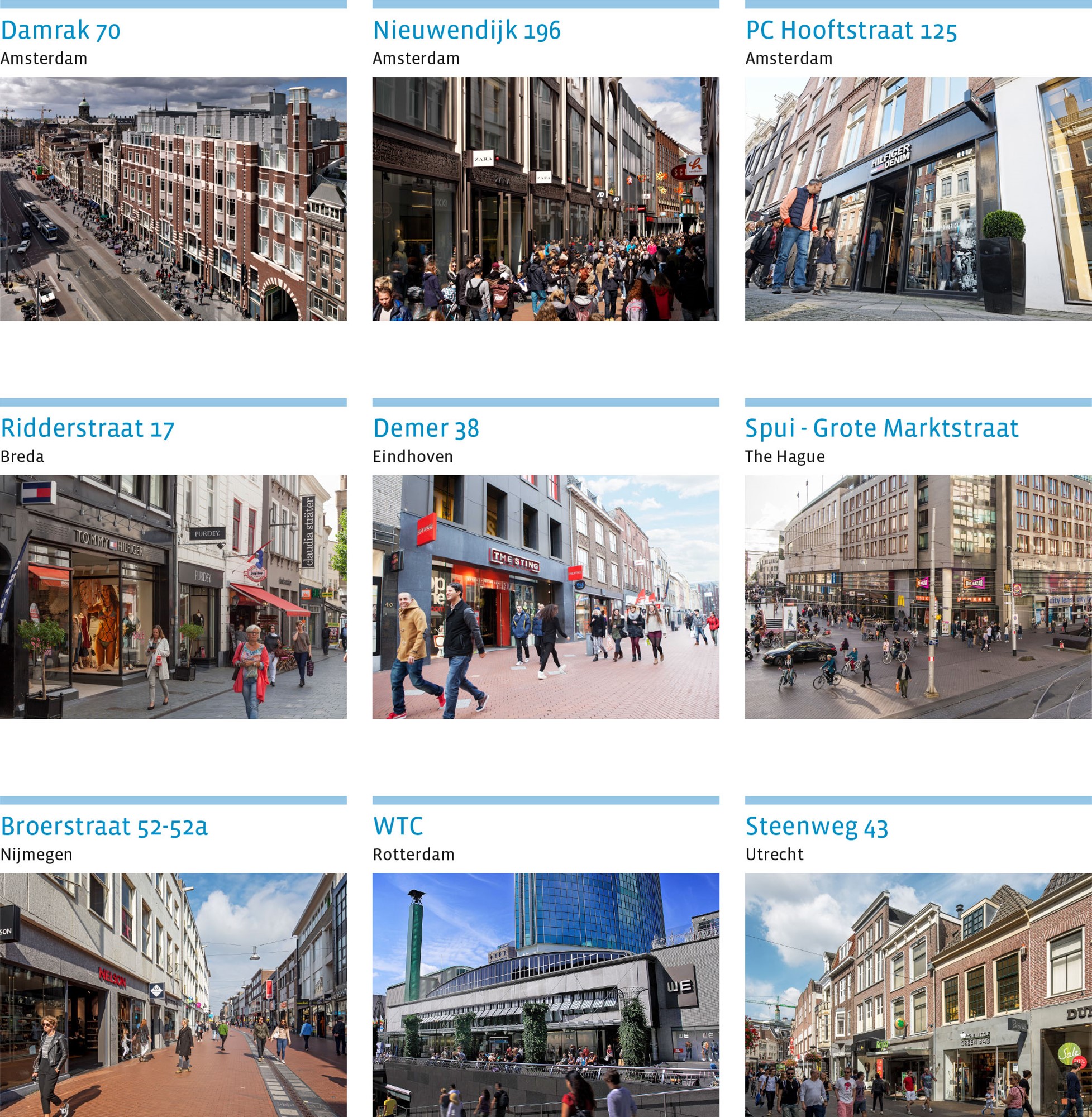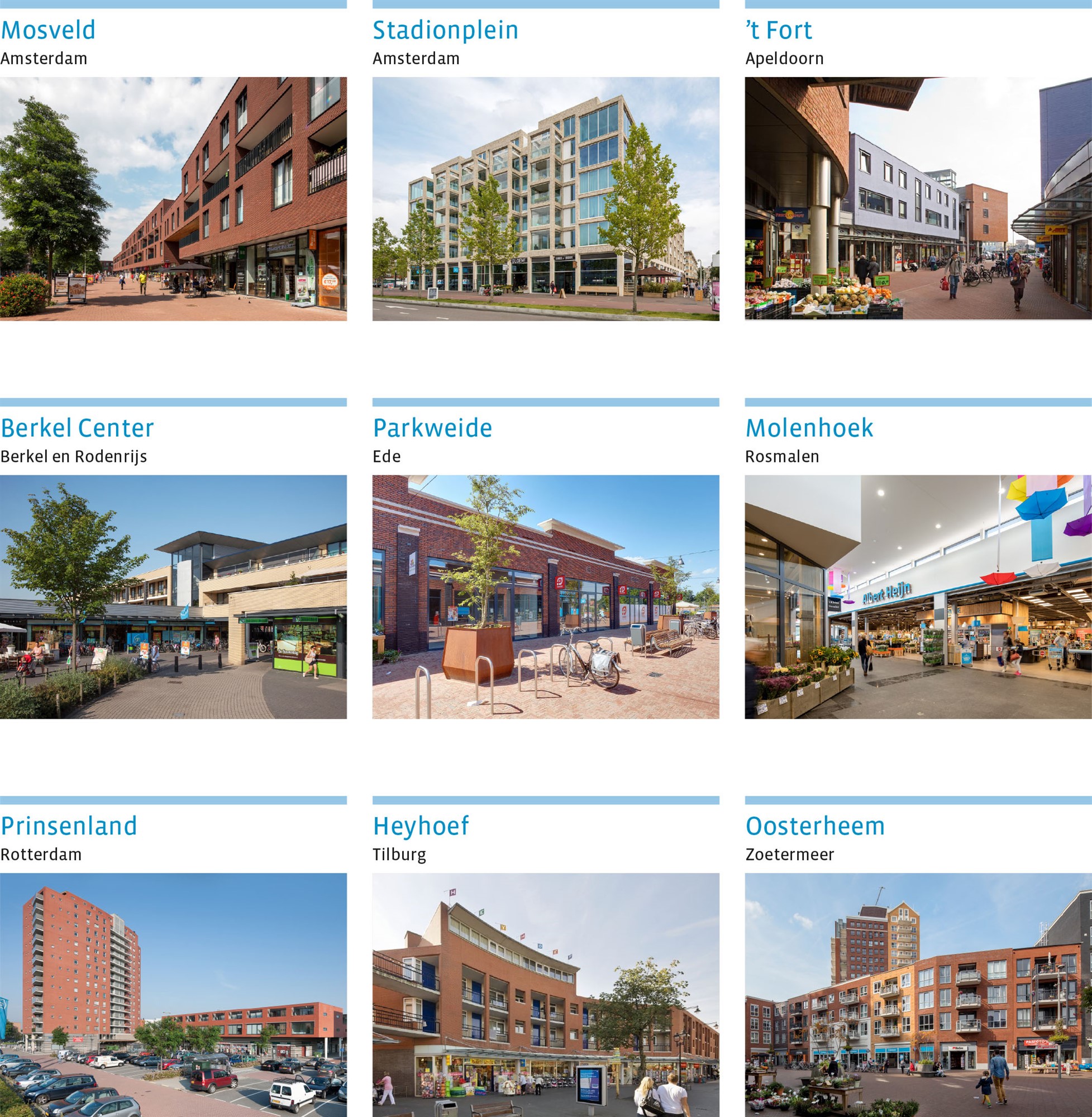Portfolio characteristics
€ 877 million in Dutch retail properties (49 assets, 234,095 m2 NLA) at year-end 2017
High-quality retail assets divided into Experience and Convenience
Continuously high occupancy rate
Continuous outperformance of the IPD property index
Four-star GRESB Rating
Major segments
The Fund’s diversification strategy is based on the belief that the future of retail real estate will be determined by two very distinct segments of the market: high street shopping areas that offer consumers a distinctive Experience and district shopping centres or stand-alone supermarkets that provide very high levels of Convenience.
EXPERIENCE - High street retail in best shopping cities
The main focus of the Fund’s Experience portfolio is on individual high street shops or clusters of shops in prime shopping areas in major Dutch city centres. These city centres have retained their market share and will continue to do so in the future. The historical surroundings, the varied supply of retail formulas, plus restaurants, museums and other cultural and leisure facilities help keep these shopping areas attractive and popular. In short, they offer today’s consumers the experience and ‘fun factor’ they demand, as shopping has become part of a ‘total experience’ for many consumers. Very importantly, these shopping areas are widely seen as the most future-proof segment of the retail market, and we believe this will continue to drive demand for retail space from a wide range of national and international fashion and lifestyle retail brands.
For strategic asset management and acquisition purposes, Bouwinvest and its research department retail experts have developed a ranking tool for the top shopping cities and high streets in the Netherlands, based on criteria such as footfall, average rent per m², vacancy rate, the number of inhabitants and average income in specific catchment areas. This tool provides an overview of the most attractive cities and shopping streets in the Netherlands.
CONVENIENCE - Shopping centres and stand-alone supermarkets with strong catchment areas
A healthy catchment area is the main factor in the success of any shopping centre or supermarket with a focus on daily shopping needs. The size – and health – of a catchment area can be affected by the regional economy, the local and regional demographic outlook and competing retail stock. A healthy regional economy guarantees employment and income growth, while demographic growth has a visible impact on a shopping centre’s potential market. On the other hand, new retail stock can lead to a reduction in a centre’s effective catchment area.
The Fund focuses on a number of additional factors that increase the level of convenience so prized by today’s consumers, an element that the Fund believes will become ever more important in the future. These additional criteria include easy accessibility, comfort parking, an effective tenant mix, plus the overall look and feel of the centre. Demographic changes in for instance average age or household size need to be actively addressed through the continuous optimisation of the property and its tenant mix. One essential part of the retail mix is one or two clear, complementary and well-positioned supermarket anchors, as these act as a major pull factor for convenience shoppers. An effective retail mix with various specialist stores is another factor that makes shopping centres attractive to consumers. Due to market changes and the ongoing growth of online sales, the number of non-food shops in these centres will decline even more in the near future. The Fund is therefore also focused on actively revitalising its convenience centres by increasing the average share – measured in square metres and in cash flow – accounted for by supermarkets, shops selling daily goods and deliveries, and decreasing the number of non-core units.
Portfolio composition by segment as a percentage of market value

Selection of principal properties
Experience

Convenience
